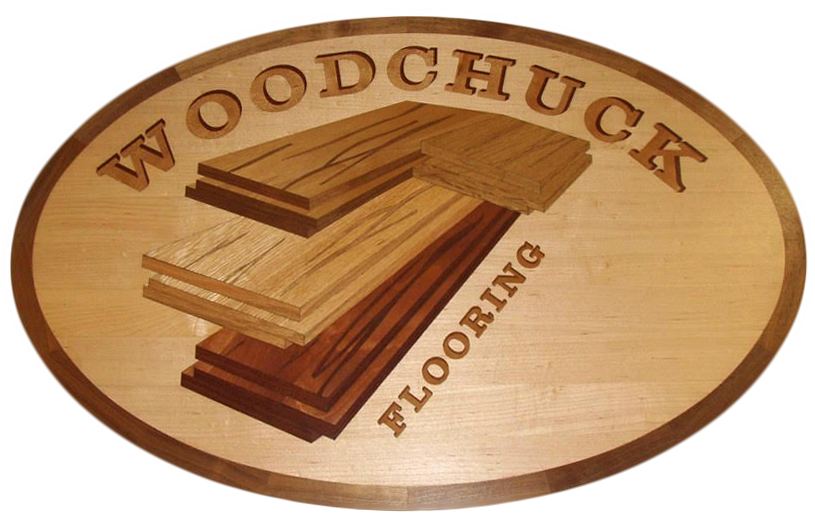Cleaning wood floors is easy. Regular maintenance includes sweeping with a soft bristle broom or dusting with a dry microfiber mop.
Recommended Maintenance Schedule
Daily: Sweep or dust mop
Weekly: Vacuum using the bare floor setting
Monthly: Clean with recommended wood flooring cleaner
Every 3 - 5 Years: Maintenance coat
Every Few Decades: Sand and refinish
To keep wood floors looking and performing well for generations, follow these guidelines:
- Do not use vinyl or tile cleaning products on wood floors. Self-polishing acrylic waxes cause wood to become slippery and appear dull quickly.
- Place rugs at doorways to help prevent debris from being tracked in and scratching the floor.
- Do not wet-mop or steam mop a wood floor. Water and steam can dull the finish and even damage the wood.
- Wipe up spills immediately with a slightly dampened cloth.
- Put stick-on felt protectors under the legs of furniture to prevent scuffing and scratching. Replace these often as dirt and debris can become embedded on the pad and act like sand paper on the flooring surface.
- Avoid walking on your wood floors with sport cleats and high heels. A 125-pound woman walking in high heels with an exposed heel nail can exert up to 8,000 pounds per square inch. This kind of impact can dent any floor surface
- When moving heavy furniture, do not slide it on wood flooring. It is best to pick up the furniture to move it and to prevent scratches.
- For wood flooring in the kitchen, place an area rug at the kitchen sink.
Frequently Asked Questions: Care + Maintenance
How are polyurethane or other surface finishes maintained?
Dustmop, sweep, or vacuum regularly. Always follow the manufacturer's cleaning recommendations if known. When cleaning no longer restores shine, recoat the floor with a surface finish. The frequency of recoating depends on the amount of traffic. Never wax a surface-finished floor, and never use vinyl or tile floor care products on any wood floor.
How are wax or penetrating-stain finishes maintained?
Dustmop or vacuum regularly, and use a buffer to maintain shine. Always follow the manufacturer's cleaning recommendations if known. If buffing no longer restores shine, you may need to rewax. If so, apply a cleaner and liquid wax specifically for wood floors. Apply the wax evenly, allow the floor to dry, and buff to the desired luster. Depending on traffic, a properly maintained wood floor should need waxing once or twice a year. Be careful not to over-wax. If the floor dulls, try buffing instead. Avoid wax buildup under furniture and other low-traffic areas by applying wax half as often as in higher-traffic areas.
How can I clean a discolored or soiled wax finish?
If the wax finish is discolored or has dirt build-up, use a combination liquid cleaner/wax made specifically for wood flooring. Make sure it is solvent rather than water-based. Spread the liquid cleaner/wax with a cloth or fine steel wool and rub gently to remove grime and old wax. Wipe the floor clean, let it dry for about 20 minutes, and then buff.
Can cleaning products for vinyl or tile floors be used on wood floors?
No. Never use vinyl or tile cleaning products on wood floors. And never use self-polishing acrylic waxes on wood floors. These waxes cause wood to become slippery and dull. In this case, the floor must be sanded and refinished.
Can a wood floor be damp-mopped or steam cleaned?
No. Never damp mop or steam clean a waxed floor. When cleaning a surface-finished floor, follow the manufacturer's recommendations. You may generally use a dampened (near dry) mop to maintain a wood floor; however excessive moisture can cause damage as can steam cleaners. Water can dull the finish and even damage the wood. If water spills on a wood floor, immediately wipe it up with a clean cloth.
How can I prevent scratches on wood flooring?
Place walk off rugs at doorways to help protect wood floors from grit, dirt and debris. Place felt pads under furniture legs and vacuum/dust your wood floor regularly.
Content found in this blog post was brought to us by the National Wood Flooring Association: woodfloors.org.
